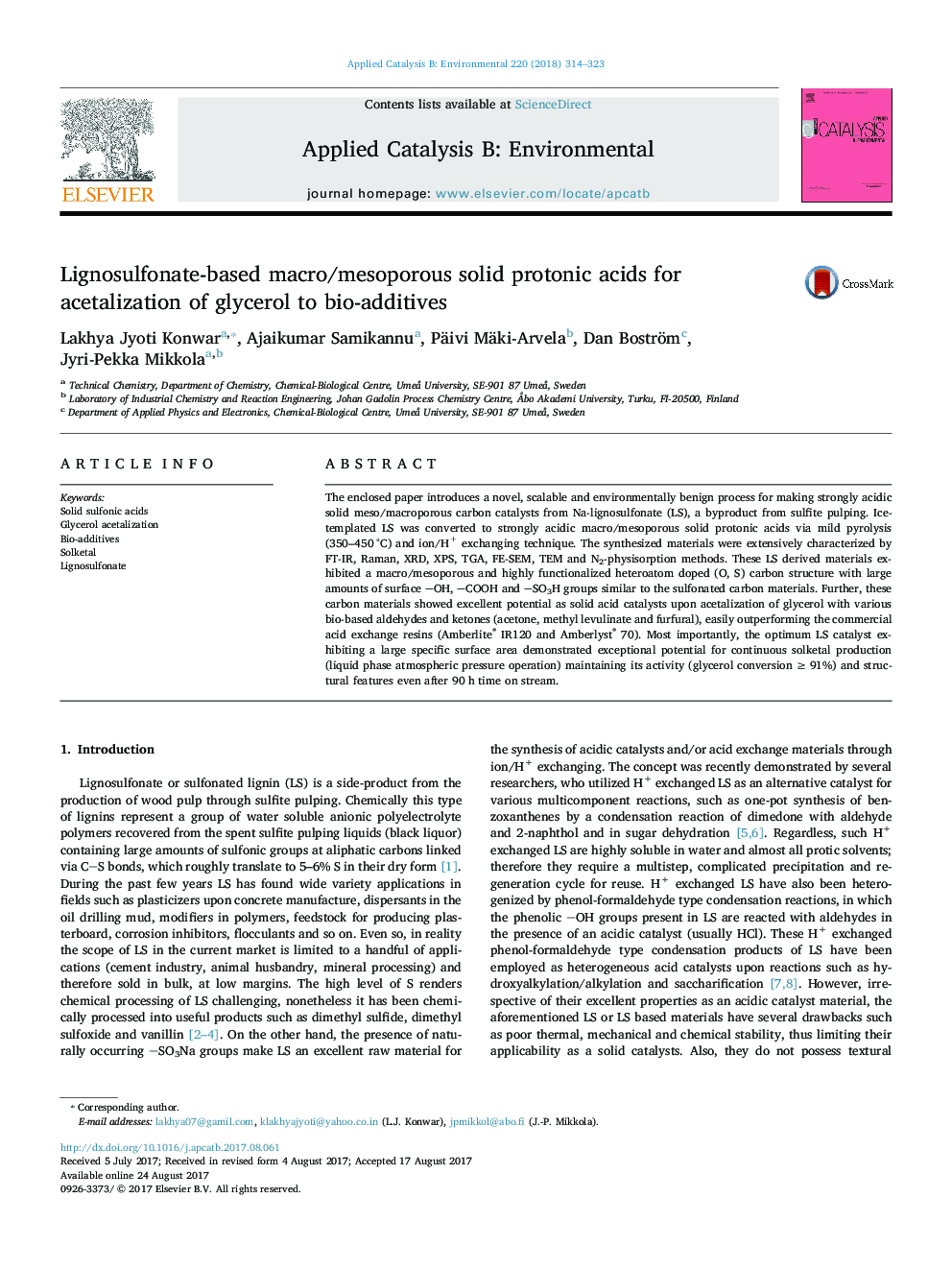| Article ID | Journal | Published Year | Pages | File Type |
|---|---|---|---|---|
| 6453603 | Applied Catalysis B: Environmental | 2018 | 10 Pages |
â¢Mesoporous solid acids (sulfonated carbons) were obtained from Na-Lignosulfonate by mild pyrolysis and H+ exchanging.â¢No need of sulfonation step with hazardous sulfonating agents.â¢Application of the prepared carbon materials in acetelization of glycerol to bio-based additives.â¢Exceptional stability upon fixed bed application (no deactivation observed after 90 h TOS).
The enclosed paper introduces a novel, scalable and environmentally benign process for making strongly acidic solid meso/macroporous carbon catalysts from Na-lignosulfonate (LS), a byproduct from sulfite pulping. Ice-templated LS was converted to strongly acidic macro/mesoporous solid protonic acids via mild pyrolysis (350-450 °C) and ion/H+ exchanging technique. The synthesized materials were extensively characterized by FT-IR, Raman, XRD, XPS, TGA, FE-SEM, TEM and N2-physisorption methods. These LS derived materials exhibited a macro/mesoporous and highly functionalized heteroatom doped (O, S) carbon structure with large amounts of surface OH, COOH and SO3H groups similar to the sulfonated carbon materials. Further, these carbon materials showed excellent potential as solid acid catalysts upon acetalization of glycerol with various bio-based aldehydes and ketones (acetone, methyl levulinate and furfural), easily outperforming the commercial acid exchange resins (Amberlite® IR120 and Amberlyst® 70). Most importantly, the optimum LS catalyst exhibiting a large specific surface area demonstrated exceptional potential for continuous solketal production (liquid phase atmospheric pressure operation) maintaining its activity (glycerol conversion â¥Â 91%) and structural features even after 90 h time on stream.
Graphical abstractDownload high-res image (146KB)Download full-size image
